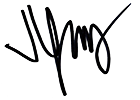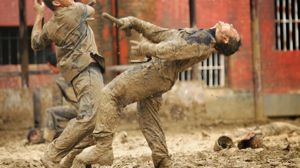So, they brought in the big guns. Not literally, of course. While guns play an occasional role in martial arts films like The Raid 2: Berendal, they might as well not exist. The whole precept of the genre is that (a) when a gun might prove most useful (i.e. when being attacked by an unstoppable master of kicking and punching) there is never a gun present, and (b) during a brawl, in the case of a laughable numerical mismatch, all comers must attack the lone fighter one at a time. My point is, having worked on films ranging from Forrest Gump to Gladiator to The Avengers, you're one of the big guns in the world of sound effects, but on this particular job, you didn't have to scroll through libraries of stock gunshots.
No, this film is a lot more interesting than that.
The foley artists who preceded you on the first picture, like Ethan Beigle, were working on a much different motion picture. Smaller budget, modest ambitions; it seemed novel enough that The Raid: Redemption was a high-concept Indonesian action film; that it was competent, and delivered what one comes to expect from modern martial arts flicks (which are painfully rare), seemed like a bonus.
And now, the inevitable sequel. The budget is bigger; the ambitions are higher. But mere competence no longer cuts it. There are expectations, now. And luckily, The Raid 2 doesn't just surpass them; it smashes them in the face with a baseball bat.
Let's face it, martial arts films like this are all about the strength of their individual components. They are truly the sum of their parts. Whatever narrative ligaments hold them together are less important to one's enjoyment of the big set-pieces: the brawls, the chases, the one-on-one fights, the inevitable showdown between hero and henchman, then hero and villain. Like a video game, the plot is nothing more than a simple block of logic that leads you to the next level of difficulty.
The standalone fight sequences in The Raid 2 are good, great, and, once or twice, sublime. A jailhouse bathroom punch-up is shot from directly overhead, so we can see how Rama, our protagonist from the first flick (how he ends up in jail after the events of The Raid, and how he gets out, is a bunch of cut-scene context involving police corruption and secret undercover missions), uses the narrow corridor of a stall to choke off a gang of attackers. A muddy prison yard brawl trades speed and elegance for brutality and imbalance. There's a car chase sequence late in the film, too, that has no business being as slick and exciting as it is. And the final confrontation between the film's two deadliest fighters is deceivingly simple, fought in close quarters, in a barren space, with no complicated mechanics or exotic weapons to obscure the absurd balletic skill on display.
Your sound effects are essential to all of this, Sean. Anyone who has seen a clip of a martial arts fight scene with the sound turned off knows that all the speed comes from the whooshes and whips and all the impact is felt through the thuds and crunches. If a martial arts film is the sum of its fight scenes, a fight scene is the sum of its foley effects, and you must have had a hell of a time putting these ones. Steel hammers thumping against sternums. The hollow ring of aluminum bats thrumming against bone. Baseballs breaking skulls. Human skin crackling against a kitchen grill. Human skulls cracked against snowy sidewalks. The list goes on and on.
In the end, watching this flick is a simple experience. The complexities of the choreography, the twists and turns of the plot, and the layers and layers of your piercing foley effects all serve to illicit the same response: pure sensory excitement. And that's precisely what _The Raid 2: Berendal _delivers.
Sincerely,

Jared







